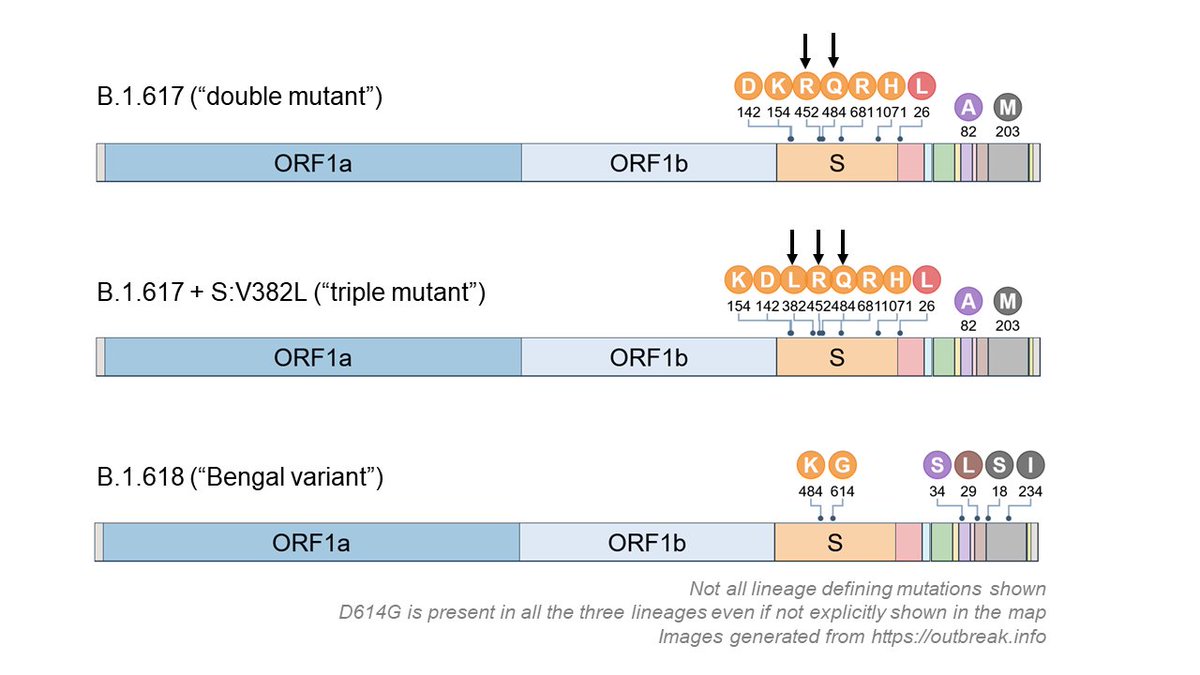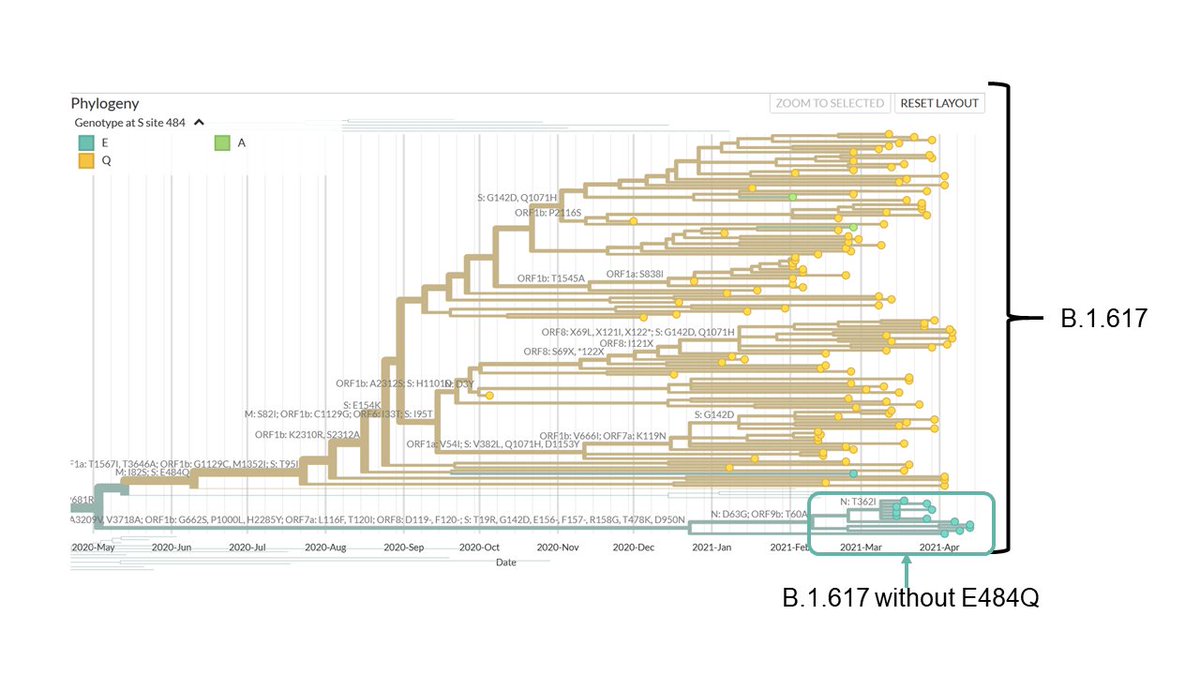
Lineages with #N440K are NOT the dominant ones in the second wave of #Covid19inIndia. While N440K was a indeed mutation of concern in South India during and after the first wave, current data shows that it is essentially replaced by new VoCs such as #B1617 and #B117 

When comparing the data from MH, in MH we can see that the increase in B.1.617 is seen in Feb rather than Mar 2021, and again we observe a reduction in proportion of lineages with N440K. 

This coincides well with the second waves seen in the respective states. In MH, the second wave started almost a month and half earlier compared to the 4 southern states, along with the explosion of B.1.617 at the expense of lineages with the mutation N440K. 

In KL, though not much data is available on GISAID, we can see from genescov2.genomes.in that B.1.1.7 is increasing at present, whereas N440K is present in <20% of the genomes
Pics courtesy: @vinodscaria

Pics courtesy: @vinodscaria


Also, it is important to remember that just because a variant behaves a certain way in cell cultures (with no competition, and in controlled settings), it does not mean it will behave the same way in humans, or in a complicated pandemic scenario.
• • •
Missing some Tweet in this thread? You can try to
force a refresh





